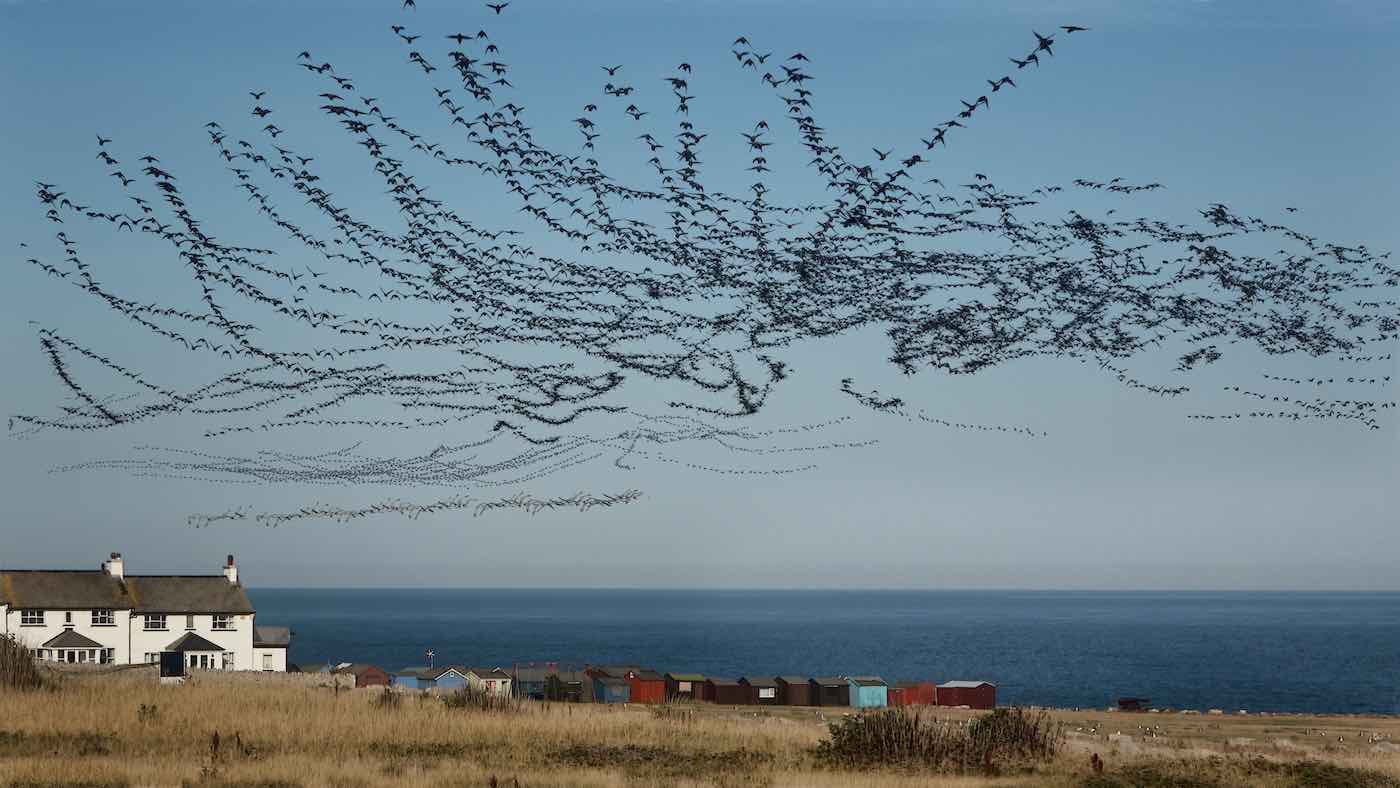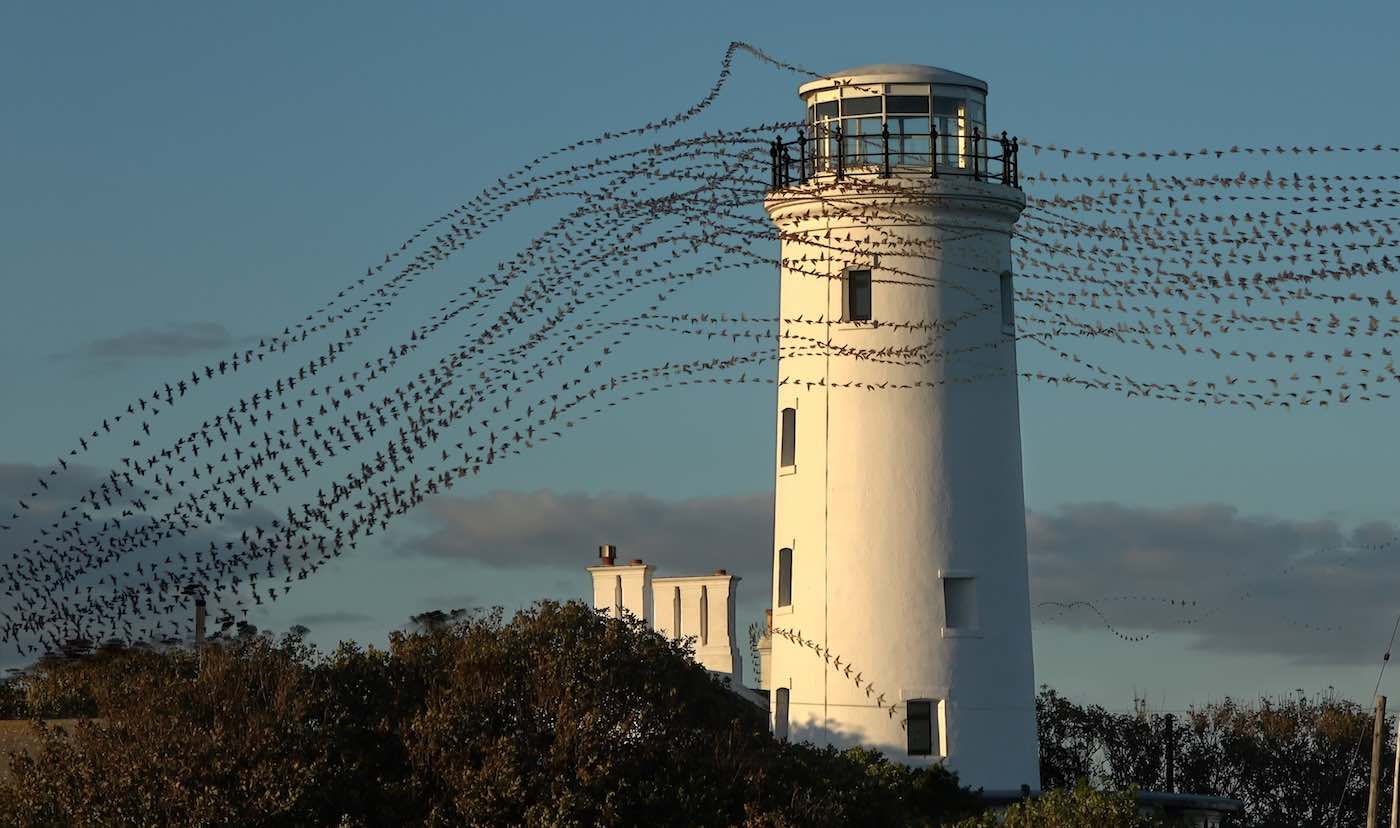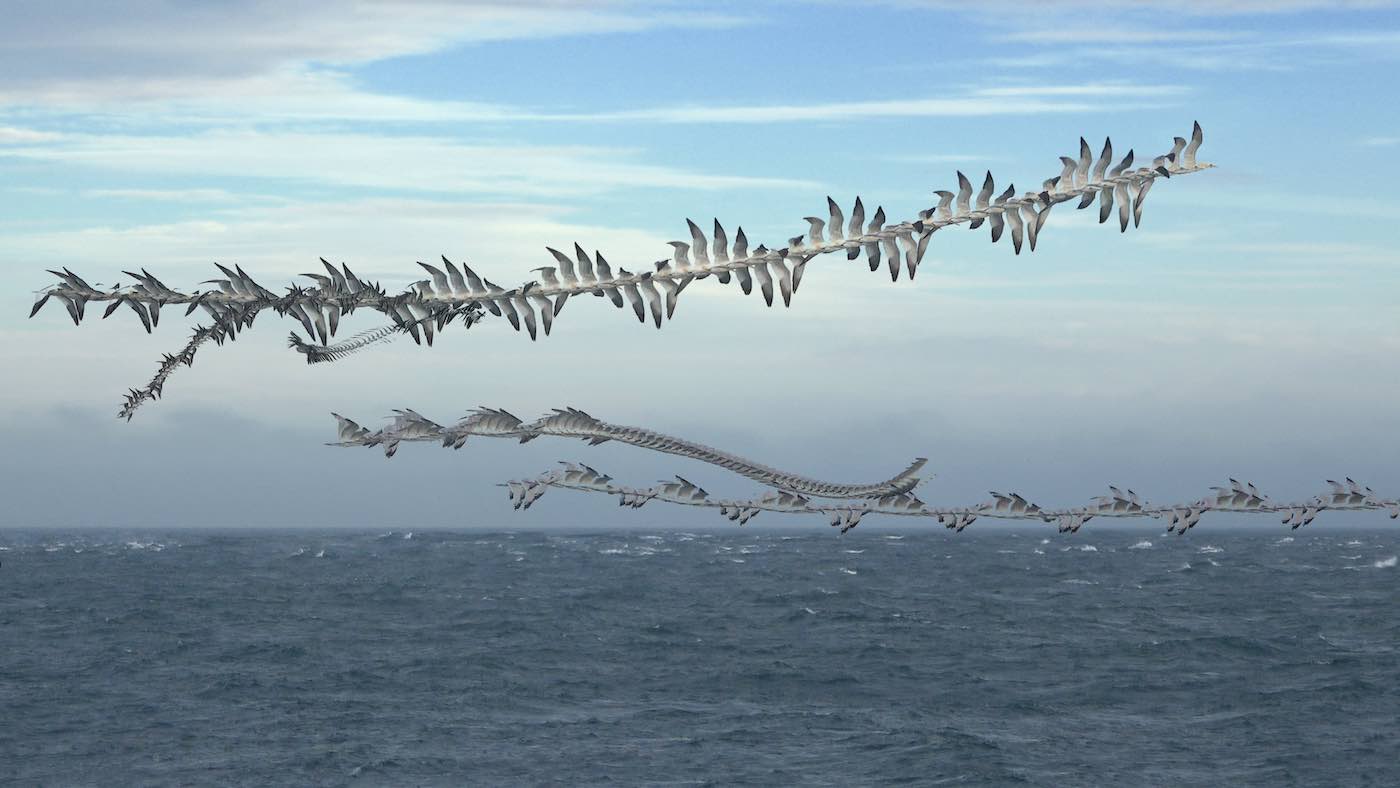- Inspiring People -
- 3mins -
- 1,597 views
These fascinating Photos Show the Patterns Created by Murmurations of Starlings
Photographer uses multiple exposures—taking around 200 pictures in just five seconds—to create these surreal images of starling murmurations.
Multi exposure ocean view by Sean Hepburn – SWNS
Sean Hepburn has been photographing birds, such as gannets and ravens, flocking on the Isle of Portland, Dorset for the past six years. However, there is nothing quite like mumuration of starlings to strike awe in all who witness these surreal phenomena. The amateur landscape photographer from nearby Weymouth took an interest in starlings after being amazed by the birds flocking habits. The post Mesmerizing Photos Show the Patterns Created by Murmurations of Starlings appeared first on Good News Network.

His pictures, which include the Portland Bill Lighthouse and the scenic the Jurassic Coast, show eye catching spiral shapes as the birds’ flight path is captured. Source: Sean Hepburn/SWNS/GoodNewsNetwork



What exactly are starling murmurations?
According to the Royal Society for the Protection of Birds (RSPB) it’s basically a mass aerial stunt – thousands of birds all swooping and diving in unison. It’s completely breathtaking to witness.
‘We think that starlings do it for many reasons. Grouping together offers safety in numbers – predators such as peregrine falcons find it hard to target one bird in the middle of a hypnotising flock of thousands. They also gather to keep warm at night and to exchange information, such as good feeding areas. They gather over their roosting site, and perform their wheeling stunts before they roost for the night.’
Autumn roosts usually begin to form in November, though this varies from site to site and some can begin as early as September.
More and more birds will flock together as the weeks go on, and the number of starlings in a roost can swell to around 100,000 in some places.
Early evening, just before dusk, is the best time to see them across the UK. You don’t need any special equipment as it’s all visible by just looking to the skies.
They mainly choose to roost in places which are sheltered from harsh weather and predators, such as woodlands, but reedbeds, cliffs, buildings and industrial structures are also used. During the day however, they form daytime roosts at exposed places such as treetops, where the birds have good all-round visibility.
Several RSPB reserves make great viewing spots for murmurations. Other popular sites to see starlings include Gretna Green in Dumfries and Galloway, and Brighton Pier, Sussex. The Starlings in the UK website can also be useful in seeing where murmurations have been occurring recently.
Source: RSPB


